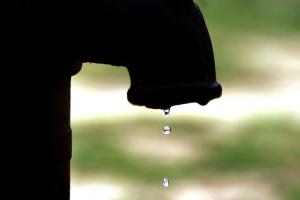- 23 reads

In many parts of the world, insufficient water supply is a significant concern. Such a condition means there is no room for overusing water. Fortunately, one way to monitor water closely and keep track of how much water is being used is through the use of a flow meter.
A water flow meter is an important piece of equipment that measures water flowing through a pipe. Just like the speedometer is essential to driving, a flow meter is essential to piping. There are several water flow meter technologies available at Litre Meter, depending on the applications, maintenance requirements, and budgetary terms. All these flow meter types have unique working principles and specific application benefits.
There are four common water flow meter types: Mechanic, Ultrasonic, Vortex, and Magnetic. Let’s dig deeper and understand each type better.
Mechanical Water Flow Meter
These are the most popular and cheapest water flow meters that measure the speed of water through turbine rotation with a shunt, propeller, or paddle wheel design. They perform flow measurement of water through the pipe that causes the piston to rotate.
Disadvantages -
-
Sadly, mechanical water flow meters may clog up when the water is dirty, which increases maintenance costs.
-
They also cannot perform well when the water flow is low.
Ultrasonic Water Flow Meter
These meters perform water flow measurement by using ultrasound. A transit-time ultrasonic liquid flow meter sends one signal downstream and one signal against the flowing fluid upstream. Then the meter compares the time taken by the pulse to travel downstream to the time taken by the pulse to travel upstream. Finally, the meter uses this differential time to calculate the volumetric flow rate in the pipe.
Unique Feature -
-
Clamp-on ultrasonic meters can measure water from outside the pipes by sending signals through the pipe walls, thus making them ideal for measuring flow in large pipes.
-
Transit time and Doppler ultrasonic meters can measure bidirectional flow without invading the stream. They can handle all types of corrosive liquids.
Vortex Water Flow Meter
These water flow meters use vortices shed from a sensor immersed in water. Vortices are like the swirls that form when the water stream moves past a rock (an obstruction). The sensor tab in the vortex meter flexes from side to side as each vortex flows past, producing a frequency that is directly proportional to the volumetric flow.
Unique Features -
-
Since Insertion vortex meters can be inserted into the flow by hot tapping with a retractor, they work very well on very large pipes.
-
Multivariable vortex flow meters are widely known because they can measure up to five process variables with one process connection: volumetric flow rate, pressure, density, mass flow, and temperature.
-
They do not require regular maintenance.
Magnetic Water Flow Meter
These water flowmeters use the principles of electromagnetism and Faraday’s law of electromagnetic induction to measure the volumetric flow. According to Faraday’s law, liquid flowing through a magnetic field generates a charge. So when the liquid flows faster, it creates more charge, and as a result, generates more voltage. The voltage is then processed into the flow rate by the flow meter.
This voltage produced is directly proportional to the movement of the water.
Advantages -
-
They are ideal for measuring process water flow since chunky liquid can clog vortex and turbine flow meters.
-
When used with control valves, they can play a vital role in keeping water emissions within limits.
-
These meters are unaffected by viscosity, pressure, and temperature.
-
They help operators save more energy through effective control of the pump speed.
Disadvantages -
-
These water flow meters can’t be used for custody transfer applications as they don’t have great accuracy.
-
They also don’t work on pure water as there are no ions to measure.
Depending on the specific application, the ideal water flow meter can be determined.
Growing Demand of Water
The growth in manufacturing and the rise in urban migration has resulted in problems involving water sanitation. Not just that! Industrial and commercial organizations have long dealt with the problem of water pollution.
As mentioned before, this alarming scarcity of water is a serious issue. It results in a dire need for leveraging reclaimed water resources and responsible water treatment.
In this regard, effective water treatment solutions include reducing raw water consumption, lowering energy and chemical costs, improving regulatory compliance, and metering effluents for measuring influent water.
Importance of Measuring Flow
Measuring water is also important to understand how to improve the efficiency of industrial plants. It is also an essential control parameter for ensuring that clean water is available. Flow measurement using water flow meters is the key to managing valuable resources.
Flowmeter is an excellent tool to measure, monitor, and control a host of water-related processes. That being said, water and wastewater processes involve several flow measurement tasks and demand meter accuracy, reliability with long-term stability, and a low cost of maintenance. The flow meters used must be able to measure large volumes of fluid carrying sludge byproducts, suspended solids, and other materials.
Flow meters can also be used to measure methane discharge and reuse. Other common uses of flow meters are:
-
Water flow monitoring
-
Water consumption monitoring
-
Dosing of water treatment chemicals
-
Leakage detection and reduction
-
Optimization of water usage
-
Network load monitoring
-
Monitoring discharge water quantity
-
Monitoring influent water quantity
While conservation efforts are critical to lowering and controlling water costs, the best solution is using advanced meter analytics. Allocating water costs directly to departments through water measurement provides a motivation to conserve. Increased public awareness propels the need for reliable and accurate flow instrumentations in all areas of water use.

